Foundations of Teaching for Learning: Curriculum
by Commonwealth Education Trust
Week One: Getting to know the curriculum
- Video lecture 1: The concept of Curriculum
- Video lecture 2: Aspects of Curriculum
- Video lecture 3: Teacher’s Curriculum
- Video lecture 4: Adapting to Curriculum
Week Two: Curriculum development
- Video lecture 1: Formulating the Curriculum
- Video lecture 2: The Need for Curriculum
- Video lecture 3: Curriculum Process
- Video lecture 4: Management of the Curriculum
John Dewey "Schools should work to shape the experiences of the young, so that instead of reproducing current habits, better habits shall be formed and thus the future adult society be an improvement on their own." So this is another major reason, used all the time for curriculum planning and development.
Ralph Tyler has put forth, in 1949, four underlying questions for any form of curriculum planning.
- What education purposes should a school seek to attain?
- What education experiences are likely to attain these purposes?
- How can these educational experiences be effectively organized?
- How can we determine the effectiveness of their attainment?
https://www.coursera.org/learn/teacher-curriculum/lecture/yHAcB/interview-1-looking-at-weeks-one-and-two
Professor Suseela Malakolunthu states: "The formal curriculum is very much what is provided by the agency that's involved in creating the curriculum, it can be the Ministry, it can be Curriculum Development Centre. It's a document that's given and then, based on the document, a teacher enacts it out, teaches in the class…. . The informal is very much based on it's an extension, I would say, of the formal curriculum.” Her words surprise me about the origin of extra curricular activities. I never thought that the extra curricular activities are a kind of informal curriculum. In her country, she said “the government decided to change term and call it a "school curricular activity", so, it becomes part of the main curriculum and there it is attached to the existing learning subjects”.
She also talked hidden curriculum as “within the classroom, or outside the classroom, in the main hall, during assembly, you can see the hidden curriculum being played out at different levels, at different ways, at different forms.”
She is more candid about roles which teachers and students play in curriculum decision making and in curriculum development. She said “the teachers just merely endorse it. They don't have more power than that and telling them not to change it drastically or dramatically or to make any changes, they don't have the power at all. And students are usually never consulted on this aspect.” She also said, "And some teachers for some reasons, they have these favourites in the class, always the same one person get picked for everything. And that kind of puts off the other children thinking they aren't good enough. Especially in primary schools "
At the end, Professor John MacBeath summarized what teachers should do about planning and teaching. “As a teacher, you don't just deliver the curriculum, you use all your intelligence, ingenuity and everything else to make that curriculum real for students” “you're thinking about the background, about the individuals in your classroom, about their levels of engagement or ability and how they're able to deal with big and difficult concepts. So, you're doing an awful lot of translation modification and thinking and I think that's a big message that we want to get across.”
Week Three: Putting students First
- Video lecture 1: A three-way Relationship
- Video lecture 2: Learning is Student-Specific
- Video lecture 3: Theories of Student Learning
- Video lecture 4: Student-Centered Teaching
Week Four: Putting Curriculum to Work
- Video lecture 1: Issues of Interpretation
- Video lecture 2: Designing Learning Activities
- Video lecture 3: Planning the Lesson
- Video lecture 4: Bringing Lessons to Life
Week Five: Theories and Theorists
- Video lecture 1: The idea of Educational Philosophy
- Video lecture 2: Three Philosophies
- Video lecture 3: Jerome Bruner
- Video lecture 4: Paulo Freire
Week Six: Optimizing Curriculum Outcomes
- Video lecture 1: Amplifying the Role of Curriculum
- Video lecture 2: Communities of Learning
- Video lecture 3: Self Check
There will be two peer reviewed assignments (weighting: 20% each): In weeks two and four, you will have a peer reviewed assignment of between 500 and 700 words to write
Week One: Getting to know the curriculum
- formal curriculum
- informal curriculum: This very much involves student participation in extracurricular activities or co-curricular activities, like clubs, uniform units, subject-specific societies, student councils, international organizations, and so on, which will help students understand different aspects that they are learning in the formal curriculum.
- hidden curriculum
The official curriculum, the taught curriculum, the learned curriculum, and the tested curriculum.
The kind of pin-ups or the posters or the murals that happens in the school. The way that school is organised. The chairs and desks, the way it is placed. All these things send some kind of message to students.
Quiz 1
Question 1
In this course, curriculum has been characterized as:
A framework that guides teaching.
Question 2
It is important to distinguish between ‘curriculum’ and ‘syllabus’ because:
A syllabus is derived from the construction of an appropriate curriculum.
Question 3
The terms 'assessment' and 'evaluation' are often confused or used interchangeably but only one of the following is correct:
Assessment refers to the process by which students’ learning is evaluated.
Question 4 The written curriculum refers to:
A document that is designed to guide what teachers teach.
Question 5 The hidden curriculum refers to:
What is hidden or unintended in a teaching incident that the learner absorbs.
Question 6
Understanding the five aspects of curriculum is valuable for teachers because:
It enables them to take charge, become aware of, and then avert undesirable outcomes.
Question 7
The teacher question "How can I turn insights on curriculum into learning and teaching strategies?" is important because:
It presents challenges to the teacher in translating theories of learning into effective classroom practice.
Question 8
The execution and enhancement of curriculum:
Are a necessary prelude to the definition of learning objectives.
Question 9
One of the purposes of curriculum is described as ‘cultural reproduction'. This is a reference to:
The experiences that children gain in the class as helping them to maintain and pass on cultural values.
Question 10
The example of giving students a pizza to share is suggested as a way of:
Teaching fractions.
Week Two: Curriculum development
organizing learning experiences, there are three different modes.
One is the transmission mode, the other one is transaction, and finally transformation.
Bloom has given six levels in his taxonomy, and here I'm combining the six levels into three.
- One is knowledge and comprehension.This is about the understanding and comprehension of the facts, skills, and values imparted by the teacher.
- two, analysis and application. This is about the ability to reconstruct knowledge through a dialogue, process, and problem solving.
- three, synthesis and evaluation. This is about the ability to combine various knowledge, facts, skills, and logic, to make unique personal judgements, exhibit personal and social change.
Usually in top-down curriculum, what we see is it's provided in a tightly prescribed format.And it is primarily imitative, characterized by teachers following the course of study without much creativity. What this does to people in the school? One is teachers become deskilled, and they become very low in their commitment towards change. They are posses low ability to think about possible changes.
Quiz 2
Question 1
The notion of stakeholders refers to:
The range of people who contribute financially to the success of school.
Question 2
The second lecture ends with the question "Why do we need a curriculum?"
The best answers to that question would be:
Because it is a source for common standards.
Question 3
For teachers, the way they think about curriculum is critical because:
They need to recognize the values and conceptions they bring to their understanding and approaches to curriculum.
Question 4
Holistic development is emphasized because:
Intellectual needs cannot be met without consideration of the emotional, social, and growth needs of children.
Question 5
In a decentralized education system one would expect to find:
A degree of freedom for schools to implement curriculum within a broad framework.
Question 6
The reference to ‘watchdogs’ in the context of this course refers to:
The monitoring of curriculum implementation.
Question 7
In the process of curriculum development the concept of ‘needs’ is critical because:
It is important to understand the meeting point of the curriculum and the needs of learners.
Question 8
Learning to be, to know, to do, and to live together are described by UNESCO as:
The four pillars of education.
Question 9
Benchmarking is a process in which:
Schools are enabled to rate their performance in comparison with other schools.
Question 10
The ‘tested’ curriculum...
The process by which children’s mastery of curriculum is assessed.
Week Three: Putting students First
Week Four: Putting Curriculum to Work
Enactive talks about the active participation, or active doing of things, by students.And iconic is about how students picturise things in your mind. And symbolic is more on the abstract conceptualisation done by students. For example, like, formulas or equations, and so on.
Week Five: Theories and Theorists
Perennialism is definitely different in the sense that it focuses on universal, everlasting ideas and enduring truths or principles, that remain constant over time. That is why we call it perennialism. And it values reports of lofty human achievements and great books of literature, art, religion, and philosophy as sources of learning.
Professor Professor Suseela Malakolunthu with Professor John MacBeath
That's a key Brunerian idea that you can teach anything to any child at any age, in some intellectually honest fashion.
If you are able to do that translation from the symbolic down into the iconic, and down into the enactive, so if we can make a big idea enactive, then children will learn. Even theorems if you like, or equations, when I was at school I struggled with equations. I couldn't understand how a plus b equals c plus d, and you take something over the equal sign and it changes its value. That made no sense to me, although I learned it. And when I saw later on, years later, I saw four year olds playing with a balance beam, and taking something from here over to there. It all came together. Very simple idea, but that was an enactive example of the Brunerian theory.
I think his whole theory is about building blocks, that you start with the simple idea then you build from there. But I think four of the key things he talks about in all learning and teaching is first of all predisposition. That you have to be able to have some kind of predisposition to learn. You don't just go in and somebody says, "Right, today this is what we're going to be teaching". You have to think about what are the attitudes, what's the motivation, how is a child already thinking and feeling.
And, the second aspect is the structure that Bruner goes back to every discipline, if you like, that we want to teach young people, any area of knowledge, it has an inherent structure, and he wants children to be able to grasp from the beginning. What is the structure of this area of knowledge? And then the third idea is the sequence, that knowledge has to be sequenced. But not in the logical sense that we've talked about that in year one you do this and in year two you do this, and so on. He says sequence is much more a psychological notion, and again, going back to the enactive, iconic, symbolic that's a psychological sequence, not a subject sequence. And so, he talks about translating the curriculum, he uses the word mode. How a teacher translates the curriculum in to one of those three modes of apprehending and grasping knowledge.



there is an element of meaning-making in the process of teaching. So, can you please tell me more about that? >>
>>I think this is something that you've talked about all the time, yourself, because you've talked in these various philosophies about constructing our ideas. And that's essentially about making meaning. And of course Bruner is talking about we don't come to any idea totally fresh. The more we can make those connections with what children have already experienced, they are thinking, they are philosophizing already. When we make the connections with that, we can introduce new concepts always based on existing knowledge. And he emphasizes, as we have in other sessions, that learning is an active process. It’s not about receiving knowledge but it’s about selecting, transforming, generating hypothesis, making meaning from information and experiences. So, when we talked earlier about the four-year-old philosophizing, that philosophizing is generating hypothesis - children do that all the time. They're generating hypotheses about how the world works and I wonder if, and if I try this, if I reach up into this cupboard and try to get something would it fall onto the floor and break -beginning to understand the world through your own thinking and your own hypothesising.
It's not the teacher's categories which we often start from, but how we make sense of things in our own filing system, because then we know where it was, and we know then how to retrieve it. So, when we use things like acronyms and so on, phone numbers and all sorts of ways of trying to remember things - they're invented by us, not by other people. We find our own ways of storing and retrieving information.
So, what do you think are the implications for teaching based on this concept of categorization?
>> Yeah, I think there are big implications for teaching here.That if you go from a teacher-centered perspective, as you have been talking about... Then you work from the teacher's categories. >> Mm-hm. >> And you hope the children will remember those categories. But if you allow children to devise their own categories, how do you actually open the question - here's some information, let's see and discuss, how do you categorize that in your way of thinking? And then you find that children have very different ways of remembering and storing information in their own quite idiosyncratic ways sometimes. If you sit at the back of a classroom and see a really good teacher talking in mathematics, for example, how do you solve that problem? How do you do your multiplication? And then this teacher discovers there are six, seven, eight different answers to this because children come with their own predispositions, their own preconceptions, their own ways of filing their thinking and their knowledge.

We all know about the notion of the spiral curriculum.
>> he certainly uses that concept but in a very different way... Than other people think of spiral curriculum. Because often spiral curriculum is essentially about the content of the curriculum that you revisit the content, you revisit the content, in a spiral. But I think he's talking about a more psychological or constructivist notion, that you have an idea, and you revisit that idea, and you begin to refine, and you begin to challenge that idea, and then you revisit it again. And each time you come back with new modes of thinking, and new insights, he says each new iteration enhances our understanding of key concepts, making learning accessible to everyone. So, it's always about what you know - you already know a lot as a four year old, five year old, think how much you know when you come into a classroom. You're not a blank sheet. I was once in a school in the United States, and there was a very lovely picture on the wall and it said "Learning starts here". And I said to the principal, "I don't think that's a very good message actually". Learning continues here, and learning is enhanced here, and that's what schools are about, what they should be about and I think that's what Bruner's about.







We talk about two key ideas of dialogue and praxis. Praxis is a word that he uses, to distinguish from practice because it has a theoretical component to it. So, often in common discourse, people talk about practice and theory, and people say well that maybe works in theory but it doesn't work in practice. But he's saying no these two things should never be distinct and separate. They are part of the whole thing. The praxis is a theoretical informed practice. And it relies on very clearly held human and political values. And then dialogue, again with a theme that we've revisited a number of times in various courses, which is about meaning - how do we get meaning, dia logos, meaning flowing through it?
And when he talks about dialogue, it's not just a question of understanding but it's a question of how we deepen constantly, deepen understanding, through the kind of engagement that we have together, so you're not delivering a lecture but we're talking together and creating new ideas, creating knowledge through that process of dialogue.

It's really a way of talking about consciousness and not just being conscious of what happening around, but being able to reflect on your own consciousness, and seeing when you have a political consciousness, you are in a much better position to be able to act in the world, and what he called transform reality, transform the world. So, it's not just consciousness. It's consciousness in action. The same way that praxis 实践 is theory in action.
Question 1
Three different philosophies are presented and discussed here because...
Teachers’ understanding of value positions underpinning curriculum, learning and assessment is professionally enhancing.
Question 2
Among the three philosophies presented...
Teachers’ professional development and classroom practice may be informed by drawing on all three.
Question 3
Essentialism in philosphy emphasizes that:
Becoming cultured and valued members of society requires disciplined approaches to study.
Question 4
The treasures to be found in great books and the enduring legacies of the great thinkers and philosophers are facets of perennialism. Which of the following would be the most justifiable implication of this philosophy for teaching?
Because these help to frame the goals of teaching as well as the nature of pedagogy, drawing, for example, on the Socratic method.
Question 5
Paolo Freire argues that there is no such thing as a neutral education system because...
There is always an educational choice to be made between freedom and oppression.
Question 6
According to Freire the 'oppressed regain their humanity’ when:
Students liberate themselves.
Question 7
Freire’s banking concept refers to...
Teachers banking information in their students which they later withdraw.
Question 8
Jerome Bruner’s assertion that you can teach anything to any child in some intellectually honest fashion relies on:
Finding the appropriate developmental stage in children’s thinking and adapting teaching accordingly.
Question 9
Bruner’s concepts of ‘economy’ and ‘power’...
Refer to the importance of reducing key concepts to make them accessible and generative.
Question 10
The importance of ‘sequence’ as used by Bruner refers to:
Building on what children already know or can do.
Week Six: Optimizing Curriculum Outcomes
John Taylor Gatto who says, "When you take the free will out of education, that turns it into schooling."


- The first question is, why is it important for teachers to have a philosophy of education?
- Why is it important for teachers to work with each other when it comes to making decisions about the curriculum and when developing curriculum within their school and within their classroom?
- What are some of the major themes that have been touched on that you would like people to take away with them when they think about this course later?
If you come into teaching with a very, very limited notion of what a curriculum is, and what you have to deliver, then I think you will never bring learning to life. And I think you will never bring your teaching to life until you take ownership of that thing called curriculum. And indeed bringing your students to take ownership of what that thing is called curriculum.
curriculum, teachers and students - they need to be always working together. The connection between these three elements is very important. If you can see that as a three-way relationship, or the pedagogy relationship, then you will have achieved the purpose of learning this course.
Question 1
Forms of knowing include:
Teachers’ knowledge of content, context, curriculum, learners’ characteristics, governing and finance, and the character of communities served.
2.
Question 2
Which of the following is the best completion of the statement 'The concept of pedagogical content knowledge includes'...
An understanding by the teachers of broad principles and strategies for teaching in their own subject. (Wrong)
3.
Question 3
Teachers’ understanding of context is important because...
This helps teachers to be responsive to background knowledge and values and shape teaching and learning accordingly.
6.
Question 6
Drawing on Perkins’ work it is argued that intelligence...
Lies between people and is created and transformed through interaction.
7. Wrong
Question 9
The metaphor of the road map is important...
For students, because it helps them to know where they are going, how they will get there, and the purpose of going there.
For students, because it helps them to know where they are going, how they will get there, and the purpose of going there.
10.
Question 10
It is argued that the value of resources in the classroom is primarily...
To cater to differing learning styles so that students may choose discriminatingly from the range of resources on offer. (wrong)














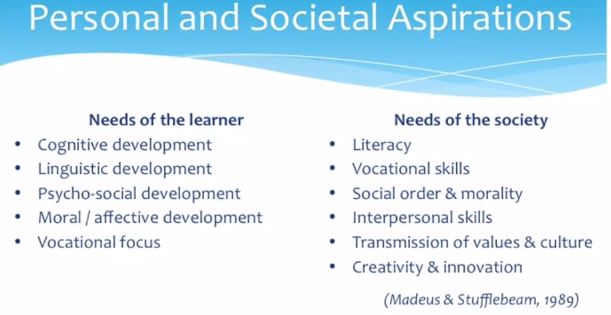

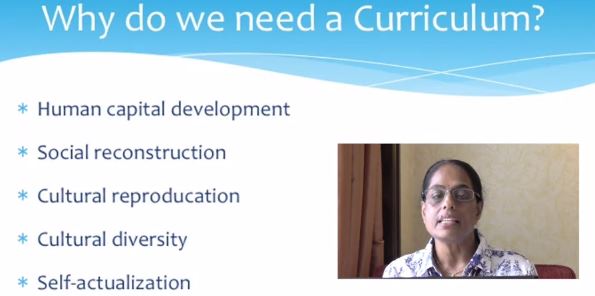

















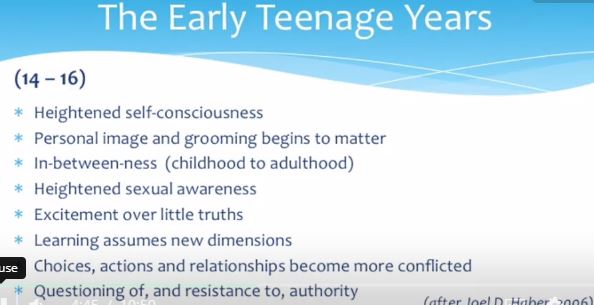



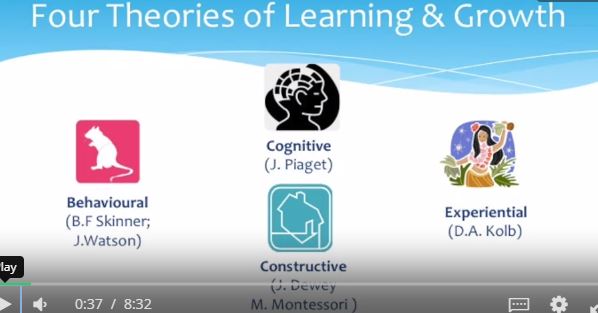






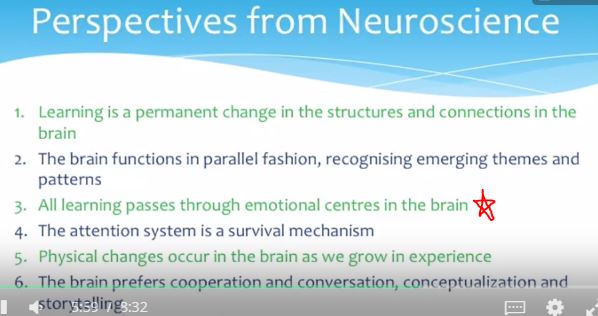


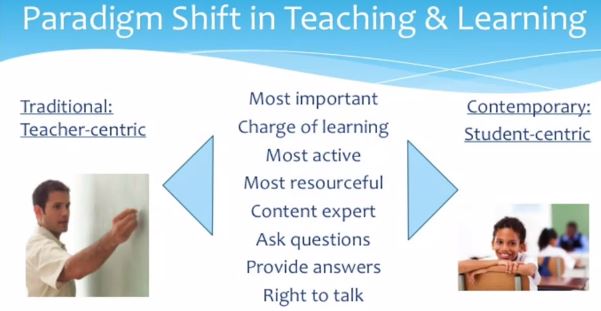
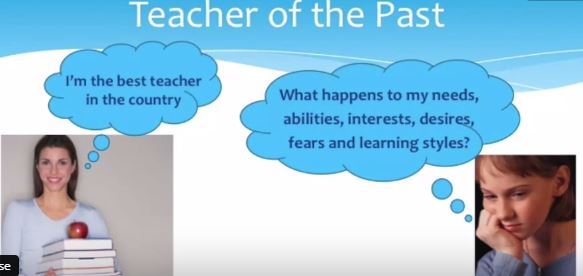
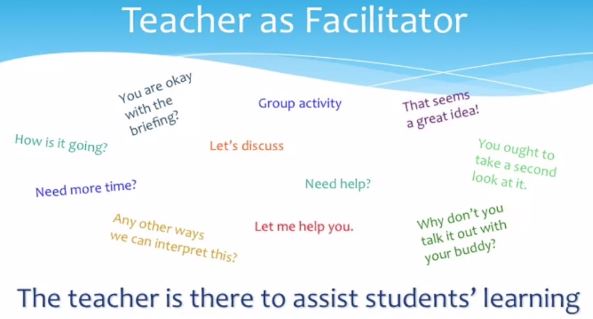

















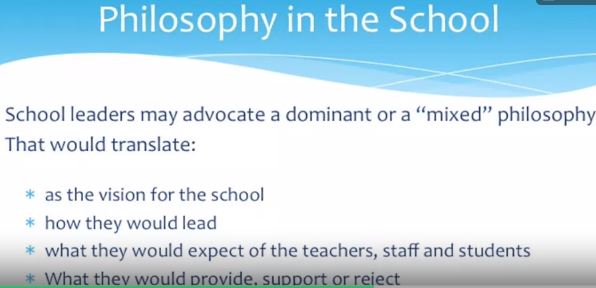







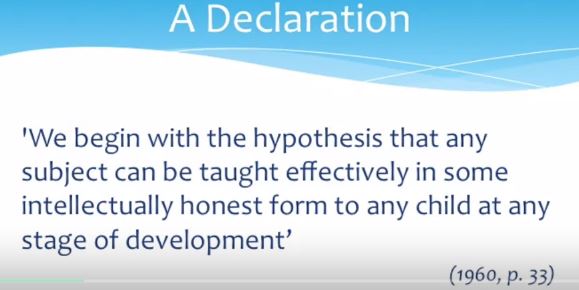















No comments:
Post a Comment